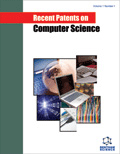[1]
C. Yang, K.H-Y. Lin, and H-H. Chen, "Emotion classification using web blog corpora", In: Web Intelligence, IEEE/WIC/ACM International Conference on IEEE, Fremont, CA, USA, 2007, pp. 275-278. IEE, 2007.
[2]
A. Pak, and P. Paroubek, "Twitter as a corpus for sentiment analysis and opinion mining", In: LREC., vol. 10. pp. 1320-1326. 2010
[3]
A. Bifet, and E. Frank, "Sentiment knowledge discovery in twitter streaming data", In: International Conference on Discovery Science, Springer, Berlin, Heidelberg, 2010, pp. 1-15.
[4]
D. Davidov, O. Tsur, and A. Rappoport, "Enhanced sentiment learningusing twitter hashtags and smileys", In: Proceedings of the 23rd International Conference on Computational Linguistics: Posters, Beijing, China, 2010, pp. 241-249.
[5]
S. Mittal, A. Goel, and R. Jain, "Sentiment analysis of e- commerce and social networking sites", In: Computing for Sustainable Global Development (INDIACom), 2016 3rd International Conference on IEEE, 2016, pp. 2300-2305.
[6]
R. Vıksna, and G. Jekabsons, "Sentiment analysis in Latvian and Russian: A survey", Appl. Comput. Syst., vol. 23, no. (1), pp. 45-51, 2018.
[7]
R. Bhargava, S. Arora, and Y. Sharma, Neural network- based architecture for sentiment analysis in Indian languages., J. Intelligent Systems, 2018 Available from:.https://doi.org/10.1515/jisys 2017-0398.
[8]
T. Wilson, J. Wiebe, and P. Hoffmann, "Recognizing contextual polarity in phrase-level sentiment analysis", In: Proceedings of the Conference on Human Language Technology and Empirical Methods in Natural Language Processing, Vancouver, Canada, 2005, pp. 347-354.
[9]
K-L. Liu, W-J. Li, and M. Guo, "Emoticon smoothed language models for twitter sentiment analysis", In: AAAI, vol. 12. pp. 22-26. 2012
[10]
X. Zhang, J. Zhao, and Y.L. Cun, "Character-level convolutional networks for text classification", In: Advances in neural information processing systems, 2015, pp. 649-657.
[11]
E. Refaee, and V. Rieser, An arabic twitter corpus for subjectivity and sentiment analysis.In., LREC, 2014, pp. 2268-2273.
[12]
Y. Kim, "Convolutional neural networks for sentence classification, 2014. Available from:", arXivpreprintarXiv1408.5882
[13]
J. Roesslein, "Tweepy version 3.5.0", 2016
[14]
J. Chung, C. Gulcehre, K. Cho, and Y. Bengio, "Gated feedback recurrent neural networks", In: International Conference on Machine Learning, 2015, pp. 2067-2075.
[15]
A.B. Soliman, K. Eissa, and S.R. El-Beltagy, "ARAVEC: A set of arabic word embedding models for use in ARABICNLP", Procedia Comput. Sci., vol. 117, pp. 256-265, 2017.
[16]
"François Chollet et al. Keras, Available from:", https://github.com/ fchollet/ 2015
[17]
S. Bird, and E. Loper, "NLTK: the natural language toolkit", In: Proceedings of the ACL 2004 on Interactive poster and demonstration sessions, 2015, p. 31.
 19
19 2
2 1
1



















